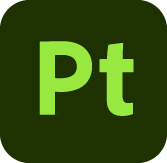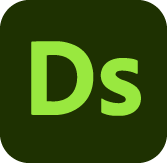
Adobe substance Glossary


Adobe Substance 3D Painter
Software within the Substance Suite that allows the user to create and visualize textures directly on the 3D model.
Adobe Substance 3D Designer
Software within the Substance Suite that allows users to create procedural node-based materials for use in other 3D software.
Adobe Substance 3D Sampler
Software within the Substance Suite that allows users to convert images to materials. This includes images generated from Adobe’s text-based AI image generator, Firefly.
Adobe Substance 3D Stager
Software within the Substance Suite that allows users to render their models as 2D images photographed in virtual environments with lighting.
Adobe Substance 3D Modeler
Software within the Substance Suite that provides the user with tools for defining the geometry of 3D models, featuring innovative and user friendly functions that emphasize non-destructive workflows and the option to sculpt in VR.
Texture
2D image that gets assigned to a material to define how the geometry of a 3D model responds to light. There are many different texture types, including those that define the model’s base color, roughness, “metalness,” and many more depending on the shader of the material for which the textures plug into.
Material
The input for textures to models. Textures get assigned to materials and materials get assigned to meshes. Materials have parameters that dictate attributes such “roughness” and “metalness,” which in turn dictate the overall look of the mesh when lit in a virtual environment. Textures are assigned when these attributes need to have a specific pattern associated with them. The types of textures and parameters a material can accept is dictated by the shader that it is based on.
Shader
The developed attributes that make up a 3D material. A shader can be made to accept inputs for specific texture maps and interpret the information from those textures a specific way. Most pieces of 3D software have prebuilt shaders for the user to utilize, and they generally follow a standardized workflow so the same texture maps can be used across software to achieve similar looking materials. That being said, custom shaders can be developed if the user wishes to achieve an effect outside of what is possible with the default material parameter options.
PBR (Physically Based Rendering)
Standardized material workflow for shaders that accepts common texture types (diffuse, metallic, roughness, specular) as inputs. Materials are not the same from program to program and thus, cannot be exported. However, most programs have a PBR material option so materials built with this workflow will look mostly the same when these textures are assigned to them.
UV Unwrapping
This is part of the 3D modeling process where the user dictates which faces on the 3D model correspond with which parts of the 2D texture.
High-Poly vs Low Poly
High-Poly meshes contain lots of details that are used to “bake” into normal/bump maps, which can then be applied to a low-poly version of the same model to keep the file size down.
Baking
The process of adding details from a high poly model to a texture, so those details can be emulated on a low poly model.
Normal/Bump Maps
These are special types of textures that give the illusion of 3D detail. This is good for keeping the poly count low on a model with lots of small details.

3D Asset Creation Glossary

